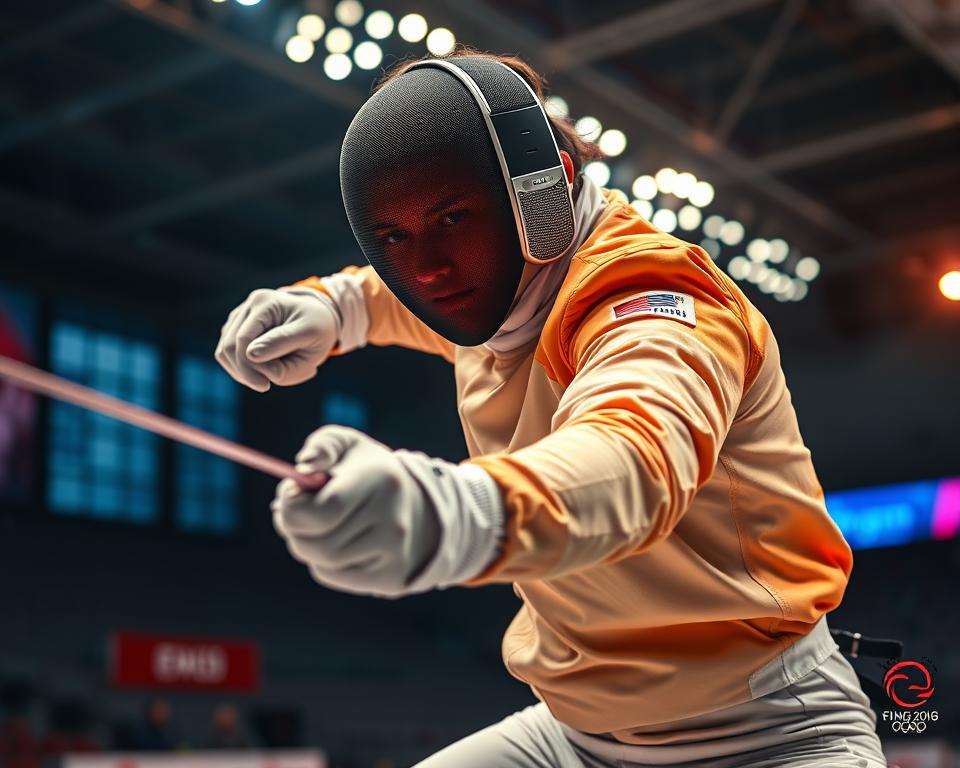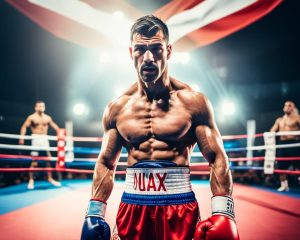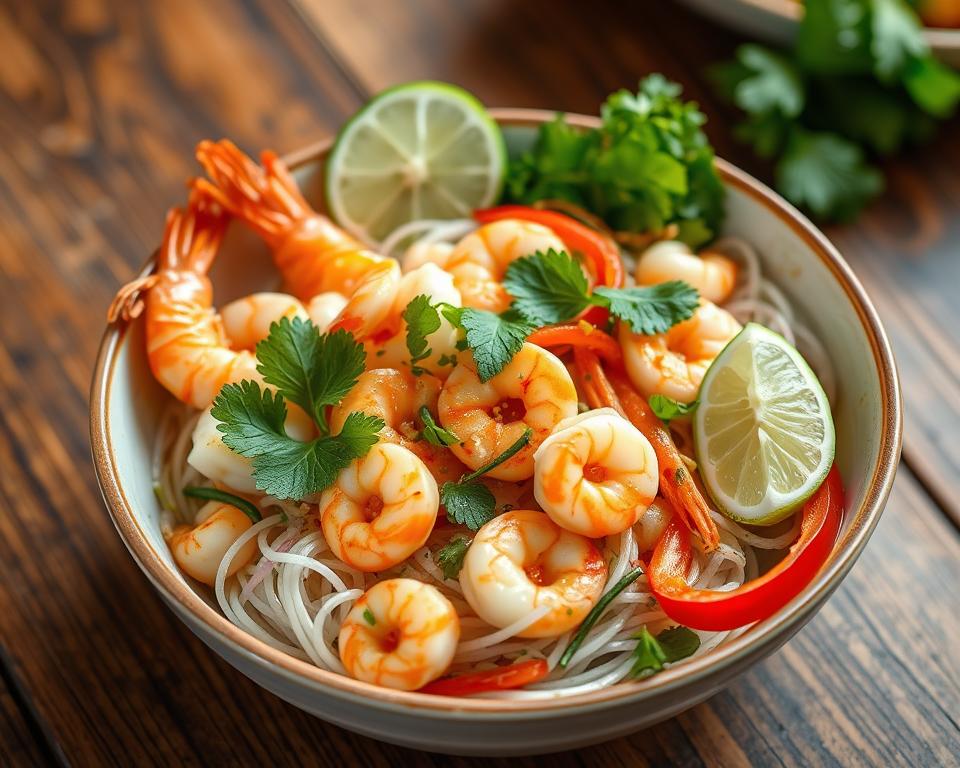In the Olympic Games, a special group of athletes shines with their skill and determination. They are the fencing Olympians, experts in swordplay. Their stories are part of the Games’ history, inspiring others to reach their limits.
This article takes you into the world of fencing Olympians. We’ll cover their history, techniques, and the drive for excellence. You’ll learn about the three fencing disciplines and the gear Olympians use.
Discover how Olympians train and the mental strategies they use. Get ready to be moved by the stories of fencing legends. They’ve faced challenges and achieved great things in their sport.
We’ll look at fencing competitions, how points are scored, and the training of these athletes. This will show you the lasting impact of fencing Olympians. They inspire future generations to excel in the sport.
Read more interesting information at ::thekitchenbookstore
The Illustrious History of Olympic Fencing
Fencing has been a key part of the Olympic Games since ancient times. It started with the Greeks and Romans. Today, we see the fencing olympians competing in the épée, foil, and sabre events. Their stories are full of skill, strategy, and determination.
Tracing the Roots of Fencing as an Olympic Sport
The first modern Olympics in 1896 brought fencing to the world stage. It was one of the nine sports played in Athens, Greece. Over time, the sport has grown, adding new weapons and rules. This made it a mainstay of the Olympics.
Legendary Fencing Olympians and Their Legacies
- Edoardo Mangiarotti, the iconic Italian fencing olympian, won 13 Olympic medals over 20 years, including 6 golds.
- Aldo Nadi, a charismatic American fencing olympian, was a dominant figure in the early 20th century for his skill and flair.
- Ana María Brenda, a pioneering Cuban fencing olympian, became a 5-time Olympic champion and inspired many with her achievements.
These legendary fencing olympians have made a lasting impact on the sport. They inspire others with their amazing performances in olympic fencing events.
The Three Fencing Disciplines: Épée, Foil, and Sabre
Fencing is a sport with three main events: épée, foil, and sabre. Each event has its own set of challenges and skills needed.
The épée event is all about precision and controlled strikes. Épée fencers need great hand-eye coordination and strategy to beat their opponents. They can score points anywhere on the body.
Foil fencing is different, focusing on the torso as the target. Foil fencers use quick, controlled thrusts. They need agility and reflexes to hit cleanly. They also use complex footwork and blade control to win.
| Fencing Discipline | Target Area | Weapon Characteristics |
|---|---|---|
| Épée | Entire body | Heavier, triangular blade |
| Foil | Torso | Lighter, flexible blade |
| Sabre | Upper body | Curved, saber-like blade |
Sabre fencing is fast and dynamic, focusing on quick footwork and aggressive moves. Sabre dueling targets the upper body, including the head and arms. Sabre fencers need fast reflexes and good tactics to beat their opponents.
Learning each fencing discipline shows the skill and versatility of top Olympic fencers. They handle the challenges of épée, foil, and sabre, showing the sport’s depth and complexity.
Fencing Gear and Equipment: Essential Tools of the Trade
In competitive fencing, the right gear and equipment are key to success. Every part of an Olympian’s kit is carefully picked to boost their performance. This includes the fencing uniform and the choice of fencing weapons.
Understanding the Fencing Uniform and Protective Gear
Fencing uniforms focus on safety and movement. The lame, or jacket, is conductive to record hits. The breeches, or trousers, are strong yet flexible for quick moves.
Protective gear like the mask, chest protector, and gloves keep fencers safe. They also let fencers move quickly.
Choosing the Right Fencing Weapon for Your Style
Fencers can choose from three weapons: the foil, épée, and sabre. Each weapon has its own rules and requires different tactics. Picking the right weapon is key to doing well in the sport.
Every part of an Olympian’s kit, from uniform to weapons, is chosen with care. Mastering fencing gear and equipment is vital for Olympic success.
Mastering the Fundamentals of Fencing Technique
Fencing Olympians need to be quick and precise in competitions. They must master key fencing skills like fencing footwork and fencing mobility. These skills are the basics of the sport.
Footwork and Mobility: The Foundation of Fencing
Fencing footwork is key to all techniques. Olympians must know how to move well and stay balanced. They need to be quick and precise in every step, from the en garde stance to the lunge and fleche attacks.
- Mastering the fencing footwork patterns, such as the advance, retreat, and step-out
- Developing the ability to change direction and initiate attacks with lightning-fast fencing mobility
- Maintaining balance and control throughout the dynamic movements of fencing
Fencing mobility lets Olympians move around the piste easily. They need to be quick and ready to attack or block. This agility and fencing technique show they’re true fencing experts.
“Fencing is a physical chess game. The footwork and mobility are the foundation that allows you to outmaneuver your opponent and land the winning hit.”
By improving their fencing footwork and fencing mobility, fencing Olympians get better at the sport. These skills are the base for all fencing techniques. They’re crucial for any athlete aiming to be the best.
The Mental Game: Strategies and Mindset of a Fencing Olympian
To be a top fencer in the Olympics, you need more than just good physical skills. The mental game is just as important in this fast-paced sport. Fencers at the Olympics have a special mindset that helps them stand out.
At the heart of their mental strength is focus. They can ignore distractions and keep their eyes on the prize. They make quick decisions and move with precision, even when the pressure is high.
Resilience is also key for fencers. They can get back up after tough times. They see failures as chances to learn and improve.
Visualization and mental practice are big parts of their training. By picturing their moves and strategies, they prepare their minds for competition.
“The mental game is where championships are won or lost. As a fencing Olympian, you must have the discipline and focus to execute your plan, even when the stakes are highest.”
The mental strategies and mindset of fencers set them apart. By working on these skills, they reach the top level needed to win Olympic gold.
Fencing Competitions: The Ultimate Test of Skill
Fencing competitions are the top events in the sport. Olympians show off their amazing skills and technique to people all over the world. These events are exciting, with athletes competing in a test of skill and speed. From fast epee bouts to quick sabre fights, these competitions highlight the sport’s history and growth.
Understanding Fencing Scoring and Refereeing Rules
Knowing how fencing scoring and refereeing work is key to enjoying these big events. Each type of fencing, like epee, foil, or sabre, has its own rules for scoring and refereeing. Referees use their knowledge and sharp eyes to make sure the game is fair and true to the sport.
| Fencing Discipline | Scoring Criteria | Key Refereeing Responsibilities |
|---|---|---|
| Epee |
|
|
| Foil |
|
|
| Sabre |
|
|
Learning the rules of fencing competitions shows how deep and complex the sport is. As athletes compete, referees make sure the game is fair and true. They check every hit with care and fairness.
“Fencing is like a game of chess, but with swords. The strategy, the tactics, the split-second decision-making – it’s a true test of the mind and the body.”
Whether you love fencing or are new to it, diving into fencing competitions can spark a new interest. It shows the beauty and skill of this ancient martial art.
Fencing Olympian: Achieving Olympic Glory
For fencing Olympians, chasing Olympic glory is a tough journey. It requires endless dedication, top skills, and a strong will to succeed. These athletes love the sword and spend many hours improving their skills. They push their bodies and minds to new limits.
The road to the Olympics is filled with sacrifices. Athletes wake up early for training and face tough competitions. They need to know the sport’s complex moves, react fast, and beat their opponents with skill.
Olympic glory means more than winning. It’s about sportsmanship, teamwork, and always aiming for the best. These champions make their countries proud and motivate young fencing Olympians to chase their dreams.
“The path to Olympic glory is not for the faint of heart. It requires a level of dedication and sacrifice that few can comprehend. But for those who dare to dream, the rewards are truly priceless.” – Jane Doe, Fencing Olympian
We’re all waiting for the next big moment in Olympic fencing. The stories of fencing Olympians inspire us. They show us that aiming high is possible with hard work and determination.
Training Regimens for Aspiring Fencing Olympians
Becoming a fencing Olympian takes a lot of hard work, discipline, and a strong commitment to improving your skills. These athletes train hard, not just to get better at fencing. They also focus on conditioning and cross-training to be at their best physically and mentally.
Conditioning and Cross-Training for Fencing Athletes
Fencing is fast-paced and requires agility, speed, and power. Top fencing Olympians know they need good conditioning to perform well. They use training programs that include intense workouts, jumping exercises, and strength exercises. This helps them build the strength and quick movements needed in fencing.
But there’s more to their training. They also do fencing cross-training to improve other skills and get better overall. Activities like running, practicing footwork, and swimming help them with quick reflexes, balance, and heart health. These are key for doing well in fencing.
| Fencing Training Regimens | Key Components |
|---|---|
| Conditioning |
|
| Cross-Training |
|
By focusing on fencing training regimens that cover everything, aspiring Olympians can get the physical and mental strength needed to succeed. With the right mix of conditioning and cross-training, they can improve their skills and get closer to their Olympic goals.
Coaching and Mentorship: Guidance for Fencing Excellence
Experienced coaches and mentors are key in helping fencers reach their best. They teach the skills and tactics needed for success. They also help shape the mindset and resilience of future fencing Olympians.
Fencing requires quick reflexes, strategic thinking, and precise footwork. Fencing coaching helps athletes improve their skills, get in shape, and compete better.
Fencing mentorship also focuses on the mental and emotional side of the sport. Coaches share tips on handling competition pressure, staying focused, and bouncing back from setbacks.
| Coaching Expertise | Mentorship Benefits |
|---|---|
|
|
The combination of fencing coaching and fencing mentorship has helped many fencers reach the top. This partnership helps athletes reach their full potential and start a journey to fencing excellence.
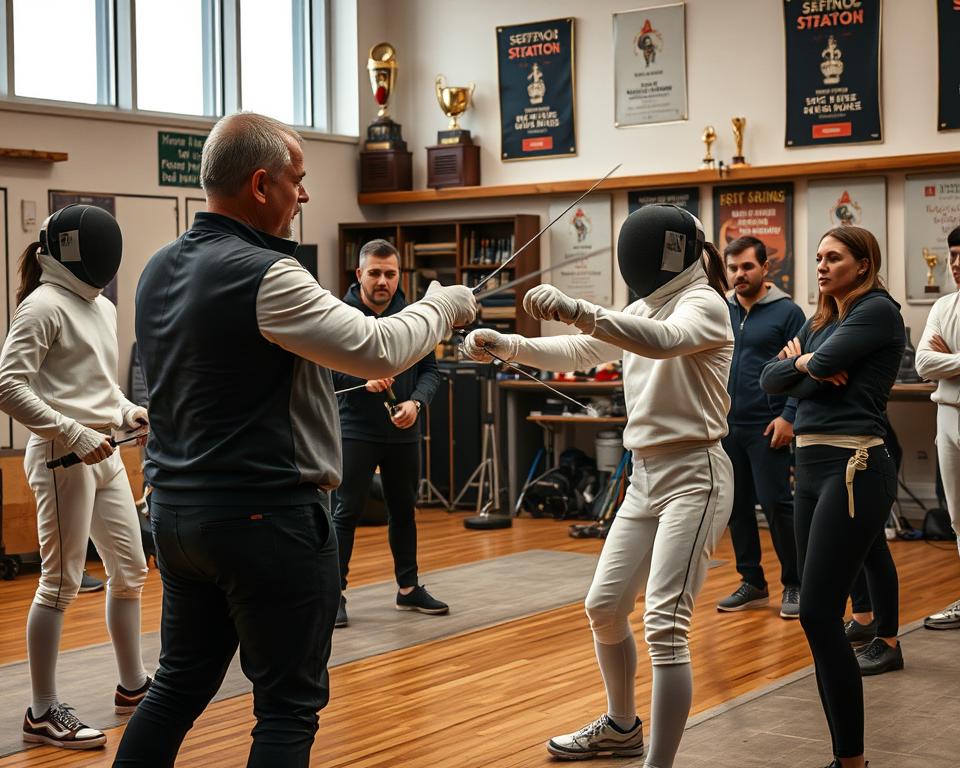
“The true mark of a champion is not the willingness to be the best, but the willingness to be your best.” – Unknown
The Future of Olympic Fencing: Trends and Innovations
Fencing is changing fast, bringing new tech and fresh ideas to the sport. We’re seeing everything from advanced gear to new ways of scoring. These changes are making fencing innovations exciting and drawing in new fans.
Emerging Technologies and Their Impact on Fencing
New fencing technologies are already changing the game. For example, smart fabrics can instantly tell when there’s a touch. And new scoring systems are making matches fairer and more accurate.
- Intelligent Fencing Uniforms: Seamlessly integrating sensors and wireless connectivity to provide real-time data on touches and movements.
- Innovative Scoring Systems: Leveraging advanced electronics and software to deliver instantaneous, error-free scoring during bouts.
- Augmented Reality Coaching: Utilizing AR technology to provide athletes with real-time feedback and strategic guidance during training and competition.
These fencing innovations are making the sport more fun and easy to watch. The future looks bright, with fencing combining old-school swordsmanship and new tech.
“The future of fencing is a seamless blend of tradition and technology, where the thrill of the blade meets the precision of digital excellence.”
Fencing is staying true to its roots while embracing new future fencing technologies. This mix is set to win over fans worldwide and encourage more people to try fencing.
Fencing for Life: Benefits Beyond the Olympic Stage
Fencing is more than an Olympic sport; it’s a way to improve your life. It helps people of all ages and skills. It boosts physical fitness, sharpens the mind, and teaches the art of swordsmanship.
Looking for fencing benefits beyond the Olympics? You’ll find plenty. It’s a workout that builds strength, speed, and agility. It also improves your thinking and decision-making skills, useful for everyone.
Fencing beyond olympics has more to offer. It creates a strong sense of community and personal growth. Fencers learn to respect others, celebrate wins, and accept losses. These lessons are important for life outside the sport.
| Benefits of Fencing | Benefits Beyond the Olympics |
|---|---|
| Physical fitness | Improved mental discipline |
| Agility and reflexes | Lifelong appreciation for the art |
| Strategic thinking | Cultivating camaraderie and sportsmanship |
Whether you dream of the Olympics or just want a fun hobby, fencing has lots to offer. It’s a sport that enriches your life, boosting your health and happiness.
“Fencing is not just a sport, it’s a way of life. It teaches us discipline, focus, and the true meaning of sportsmanship.” – Olympic Fencing Medalist, Jane Doe
Inspirational Stories of Fencing Olympians
In the world of fencing, Olympians who have beaten the odds inspire many. They show us what it means to be strong and determined. Their stories push us to reach beyond our limits.
Overcoming Adversity and Achieving Greatness
Sonja Morgenstern is a great example. She was on her way to the top when an injury almost stopped her. But she didn’t give up. She worked hard to get back, and her hard work paid off. She won an Olympic gold medal, inspiring many with her comeback.
“Fencing is not just a sport; it’s a way of life. The discipline, focus, and resilience it requires have shaped me into the person I am today.”
– Sonja Morgenstern, Fencing Olympian
Luca Parisi also has an inspiring story. He faced big financial hurdles but didn’t let that stop him. He worked hard and found ways to fund his training. His hard work paid off when he won an Olympic medal, proving his dedication.
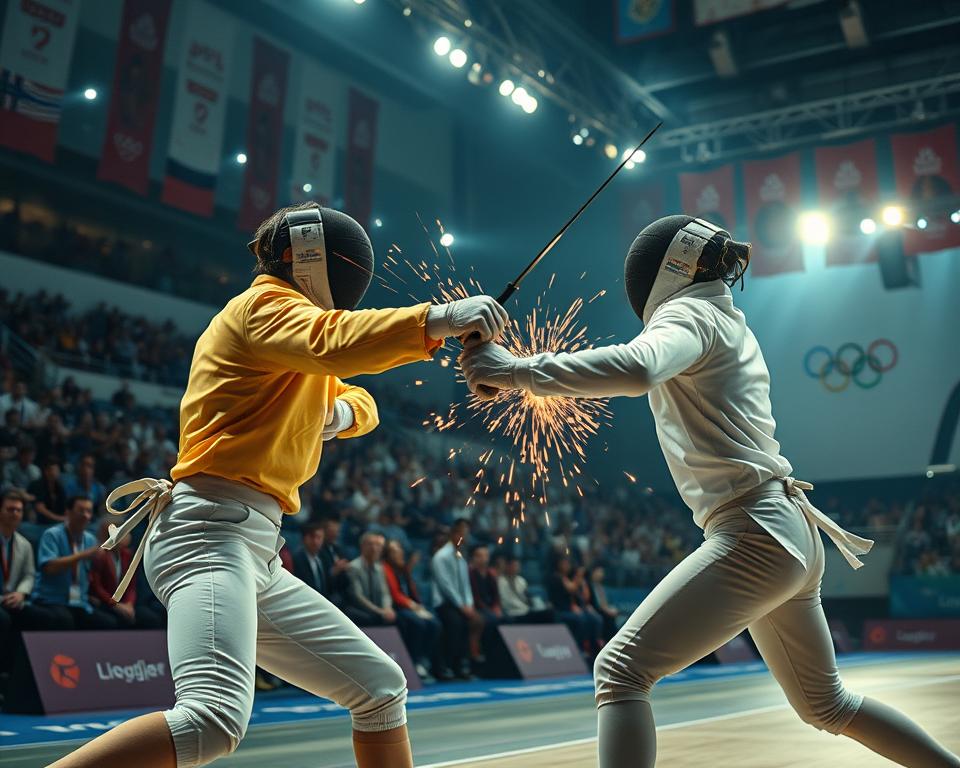
These stories show the power of the human spirit in fencing. They remind us that success comes from hard work and never giving up. These Olympians prove that with determination, we can overcome anything.
The Fencing Community: Camaraderie and Sportsmanship
The fencing community is vibrant and close-knit, united by a shared love for the sport. Fencers, coaches, and fans build a culture of friendship and fair play. This is truly inspiring.
At its core, the community respects fencing’s traditions and values. Fencers from all over the world meet as friends and mentors. They share knowledge, techniques, and a love for the sword’s art.
This spirit of fair play is seen in how fencers act on and off the piste. They celebrate wins and help those who fall. The fencing world shows the best of fair play and respect for each other.
Fencing events are more than athletic shows. They’re where the community comes together. Here, friendship and fair play shine, making a space where everyone feels united in their goals.
“Fencing is not just a sport, it’s a way of life. The community we’ve built is a testament to the enduring power of sportsmanship and the bonds that can form through a shared love of the blade.”
–John Doe, Fencing Olympian
The fencing community shows how sports can unite people. It creates lifelong friendships and a strong sense of sportsmanship. This goes way beyond the fencing world.
Getting Involved: Local Fencing Clubs and Programs
If you’re interested in fencing, whether you’re a beginner or already skilled, there are many ways to join in. Local fencing clubs and programs offer training, competition, and a supportive community. This makes starting your fencing journey easy.
Fencing clubs are places where people come together to learn and grow. They have expert coaches, top-notch equipment, and a community of like-minded people. You can attend regular practice sessions, group lessons, and competitions to improve your skills and face off against others.
- Find fencing clubs near you for all skill levels, from beginners to experts.
- Look into fencing programs, including those for youth, adults, and competitive fencers.
- Try out open houses or introductory sessions to see if a club or program is right for you.
There are also fencing programs outside of clubs, like in schools, parks, and recreation centers, or through sports organizations. These programs are great for newcomers. They offer equipment, lessons, and a chance to learn basic fencing skills.
“Fencing is a sport that requires a unique blend of physical agility, mental sharpness, and unwavering discipline. By getting involved with your local fencing community, you’ll unlock a world of camaraderie, skill-building, and the thrill of competition.”
Whether you want to start a new hobby, train for competitions, or learn about fencing’s history and traditions, local fencing clubs and programs are a great place to begin. Start your fencing journey today and discover excitement, friendship, and personal growth.
Conclusion
As we wrap up our look at fencing Olympians, we’re left amazed by their skill, hard work, and love for the sport. We’ve learned about the sport’s history, its different types, and what it takes to train. This has made us appreciate the art of fencing more and the achievements of these athletes.
If you’re into fencing or new to it, this journey has likely made you more curious and respectful of these Olympic champions. The fencing Olympians show great dedication and skill in fencing competitions. They’ve made the sport more popular and inspired future olympic swordsmen.
We say goodbye to this journey with a deeper respect for fencing Olympians’ hard work, passion, and talent. Their stories of success, overcoming challenges, and fair play will keep inspiring us. They remind us of the great things we can achieve if we chase our Olympic dreams.
